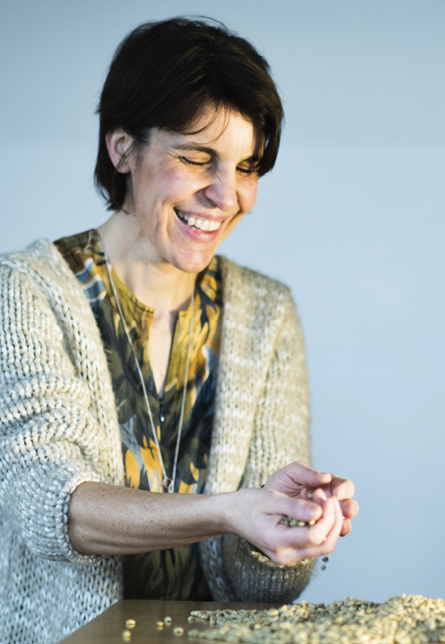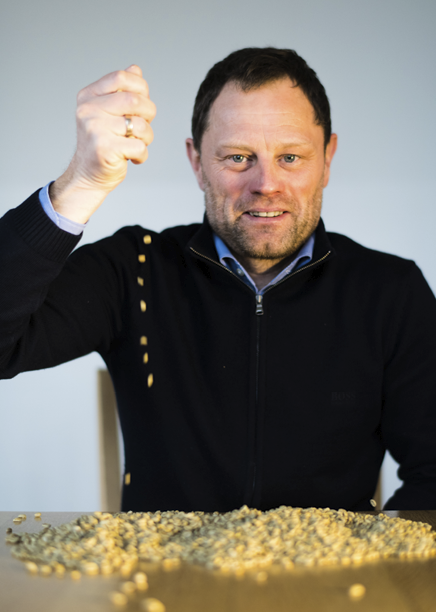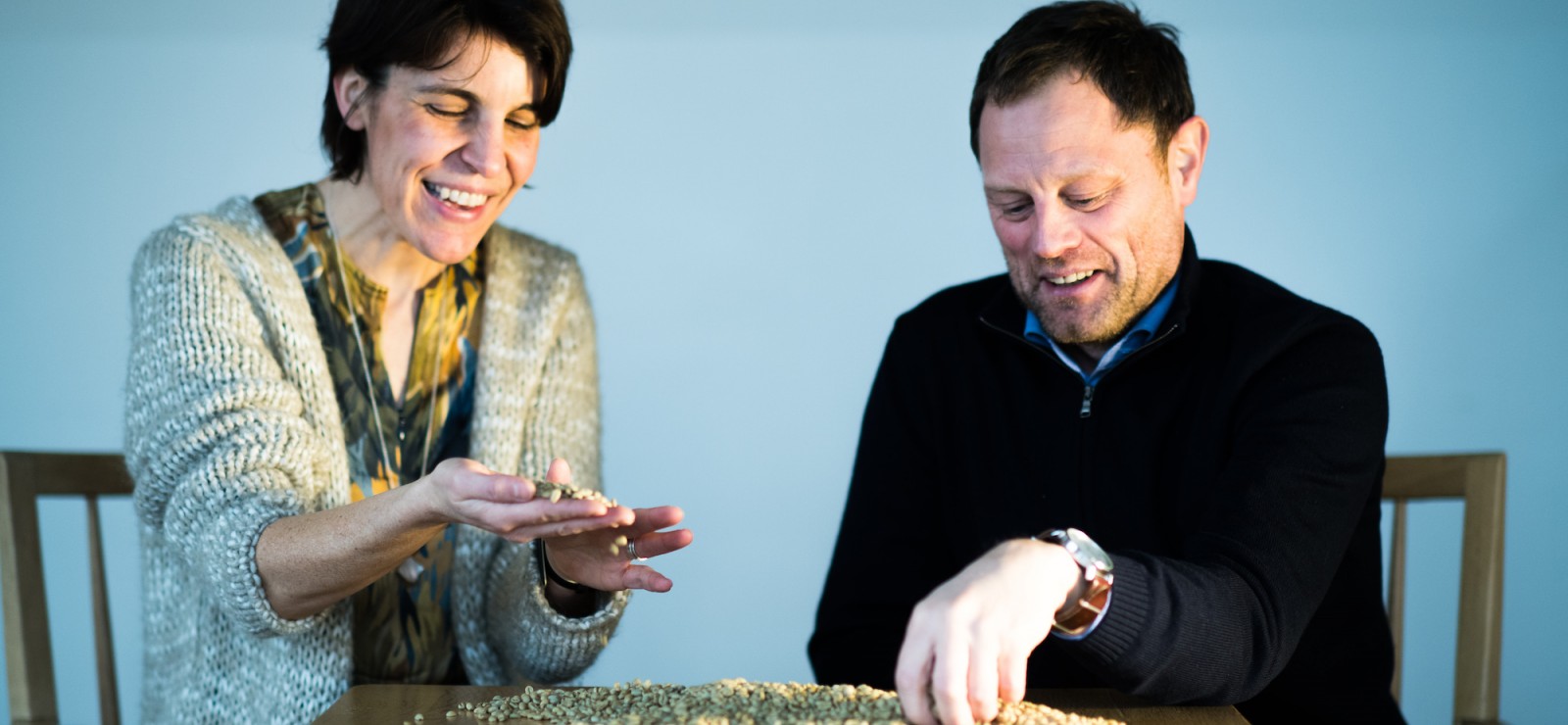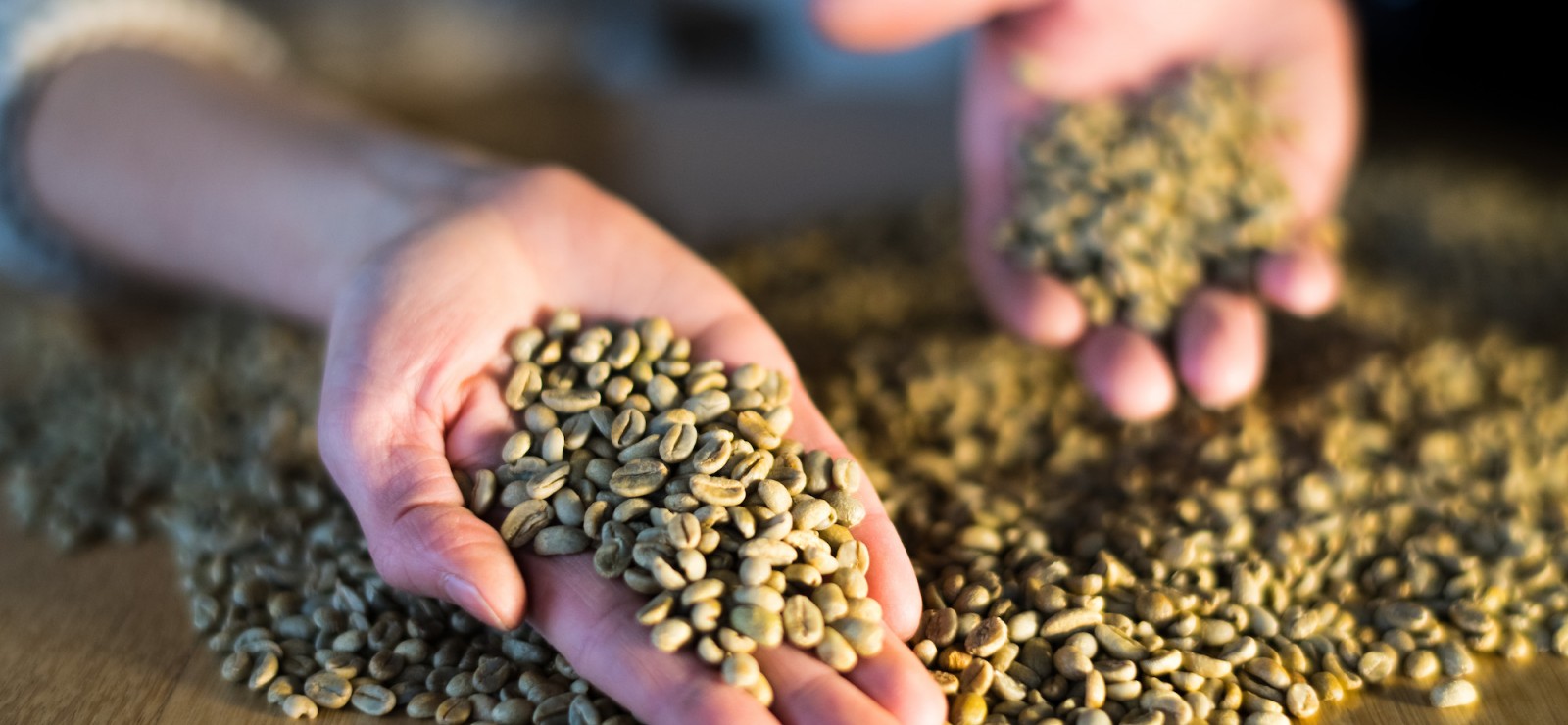Every cup of Fair Trade coffee consumed at Ghent University benefits the producer. However, researchers at the Faculty of Bioscience Engineering have taken things a step further. A high-tech method to confirm bean quality can guarantee a better price for coffee farmers in the longer term.
What is the usual method to determine the price of coffee?
Professor Pascal Boeckx of the department of Green Chemistry and Technology: ‘In Ethiopia – where we launched this project – most coffee is traded via the Ethiopian Commodity Exchange (ECX). A trained panel comprising three or four specialists (so-called ‘cuppers’) assesses the physical and sensory characteristics. Following a strictly documented procedure, they make, taste and score several cups on criteria such as flavour, acidity and body. If the coffee achieves a cup score of at least 75 out of 100, it continues to a second round of sensory analysis, to determine whether it can be sold as an exclusive quality coffee. This involves testing ten criteria, including aroma, aftertaste and sweetness. To be classed as specialty 1, coffee must score a minimum of 85 out of 100, and specialty 2 equates to a score of between 80 and 85.’
Professor Marijke D’Haese of the department of Agricultural Economy: ‘This classification determines how much the foreign coffee roaster or importer will pay, and how much the traders and farmers will earn. The price varies tremendously between the different categories.’

Cup tasting - a time-consuming procedure?
Pascal Boeckx: ‘Yes, and above all it’s subjective. It frequently causes discussions between e.g. suppliers and coffee roasters. Indeed, the human factor can never be eliminated entirely. Allow a range of bodies to taste 100 coffee samples and you’ll end up with very different scores and even another ranking. As scientists we can’t accept this kind of situation. So, we went in search of an objective method with which to define the quality, and therefore also the price.’
At Ghent University we drink Fair Trade coffee: every cup benefits the producers. The student restaurants also serve Fair Trade tea, fruit juice, wine, sugar and cocoa powder.
What was your approach?
Pascal Boeckx: ‘Infrared spectroscopy is often used in soil analysis, for example, to establish carbon content. This inspired me to apply the same technique to green coffee beans. From a selection of around one-hundred coffee samples whose cup score had been defined, we ground a small number of green beans. Then we analysed each sample with near-infrared- spectroscopy (NIRS). Depending on the chemical composition of the coffee, certain wavelengths within the IR-light are absorbed, whilst others are deflected. This gave us a whole collection of IR spectra which could be linked to a specific cup score. You could say that we ‘trained’ the device to recognise a particular bean quality. Now, when we use NIRS to analyse an unknown coffee sample, a mathematical algorithm compares the result with the familiar spectra. In doing so, the built-in calibration app can predict the cup score pretty accurately. Also, the spectrometric method is extremely fast. In a matter of seconds, you can confirm the quality category to which the coffee belongs.’
Are all of the world’s coffee farmers now reaping the rewards of your discovery?
Pascal Boeckx: ‘No, unfortunately we’re not at that point quite yet. So far, the technology has only been able to demonstrate its value during one seasonal harvest in Jimma, a region in South-west Ethiopia. We’re now planning a new study to establish whether the results apply in other coffee-producing regions. Only then can we claim to have developed a universal standard. This early success is just the beginning, but it’s a fast-moving domain. At TU Eindhoven, colleagues recently succeeded in developing a micro-IR-spectrometer which fits inside a smartphone. If we could already use such a mobile device to analyse the green beans on the farmer’s premises, without first needing to grind them, the quality definition could be achieved much earlier in the chain.’
And does that benefit the farmer?
Marijke D’Haese: ‘In any case, it would significantly improve the negotiating position of farmers and their cooperatives. In the present system they often receive a unit price – the quality is of little importance. Above all they are paid according to quantity. If the cup tasting then reveals that their coffee is above average, it’s the buyers who receive the profit. This means that there’s currently little motivation for farmers to pay more attention to quality. Yet they could, if they made a more careful study of the ideal location for their plantations, and by maintaining and regularly pruning their plants, and providing plenty of nutrients. The method of harvesting and sorting is important as well. All of these factors can help farmers to increase their income.’

How do people in Ethiopia view such innovation?
Pascal Boeckx: ‘A more efficient and objective procedure for determining the coffee price can increase earnings in Ethiopia. Coffee is the country’s biggest export, so they are naturally very interested in our findings.
Kassaye Tolessa Sherge, the Ethiopian student did her PhD at Ghent University on this project in 2017, is now teaching at Jimma University. She is testing the IR method in the current harvesting season. That should tell us whether or not the system is robust. Yet, even if last year’s benchmarks are not valid, our research remains really valuable. It just means that we’ll need to conduct a new calibration exercise for every harvest. It is not much of a problem.’
Marijke D’Haese: ‘The heart of the matter is that the farmers must manage to deliver a consistently high quality by becoming more professional. Then, when selling their coffee in a reliable logistics chain, this will help to secure better contracts. This spectroscopic innovation is only one piece in the puzzle, but it can certainly contribute to sustainable change. Otherwise, it’s all in the lap of the gods.’
Read also
Manon researches healthy sugars: “Because of my research I pay more attention to what I eat”
Manon Steynen from the Faculty of Bioscience Engineering is trying to convert unhealthy sugar into healthy sugar.
This is how to avoid parasites on holiday
Holidays! You're already looking forward to all the delicious things you'll eat while travelling, but wait ... Can you just eat anything? "There are some foods that you need to be a bit careful with.” Professor Sarah Gabriel tells us how to avoid taking an extra passenger back home
“If we want to feed nine billion people in 2050, we’ll have to look to the sea.”
Marine biologist and Professor Emeritus Patrick Sorgeloos (Faculty of Bioscience Engineering) was instrumental in shaping modern aquaculture in recent decades. If his career has taught him one thing, it is that aquaculture has a crucial role to play in continuing to ensure food security. “By 2050 more than half of our food must come from the sea. And it’s possible.”
Understanding the impact of climate change? Measure, measure and measure again!
“Climate change is a global problem. But if you really want to know its impact, you have to have local data.” So say meteorologist Steven Caluwaerts and bioengineer Pieter De Frenne. They both do research on microclimates, albeit with a different starting point. “Actually, we are very complementary. We should meet more often!”





